|
Conference Information:
1、Conference Agenda PDF
2、E4Tech-Real-world car emission estimations – a more accurate approach PDF
3、China Passenger Vehicle Fuel Consumption Development Annual Report 2016 PDF
The Innovation Center for Energy and Transportation (iCET) held a "2016 China CAFC and Urban Real-World Emission Evaluation Workshop" in Beijing on September 21st. The workshop was supported by the UK Strategic Prosperity Fund (UK-SPF) and the Energy Foundation (China). Low-Carbon lead of the UK-SPF, Mr. Jonathan Farr, Clean Transportation Project Manager of the Energy Foundation (China), Ms. Xin Yan, and iCET’s founder and president, Dr. Feng An, gave the opening remarks.
iCET released its sixth annual "China Passenger Vehicle Fuel Consumption Development Annual Report 2016," its second annual analysis report “2016 Real-world Passenger Vehicle Fuel Consumption Analysis,” and its first “ICT based Urban Real-world Transportation FC and Emission Research-Chengdu Case Study Brief." Dr. Jingnan Hu from the Chinese Research Academy of Environmental Sciences presented "The Development of Monitoring Policy and Technology in Real-world Fuel Consumption and Emissions from Motor Vehicles," and introduced his research institute’s recent work in this area. Mr. Dave Oude Nijeweme, representing E4Tech, a leading UK transport policy and modelling consultancy, introduced the UK-SPF supported “China Urban Transport Emission Calculator (CUTEC)," a tool that was developed jointly with iCET. Mr. Oude Nijeweme also introduced a top-down approach for estimating the real-world vehicle emissions in the UK, and emphasized the projected developments in the transportation sector to tackle climate change.
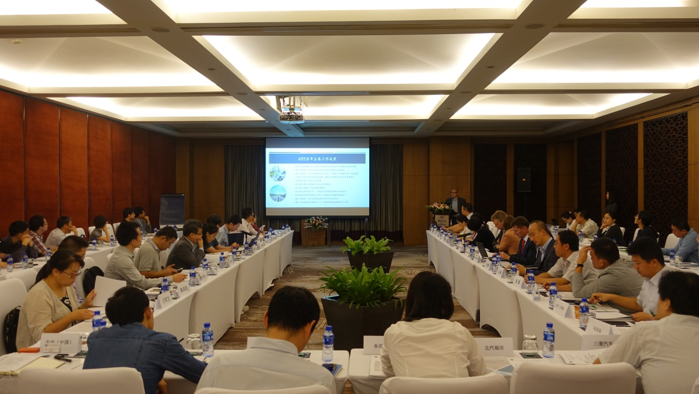
Despite national and local commitments made by China’s policy-makers and industry players for reducing transportation oil consumptions and emissions, China’s oil dependency and urban air quality continues to deteriorate. Among all of the challenges, one key factor that contributes to the problem is the lack of an accurate and accountable measurement system. The test-cycle based measurement of fuel consumption and emissions don’t reflect real-world emissions for a variety of reasons, of which some are solvable. The new ICT era presents decision-makers with the opportunity to improve data sources for more accountable and effective efforts to improve fuel economy, reduce carbon emissions and bring back blue skies to China’s cities.
 Ms. Liping Kang, the project manager of iCET Clean Transportation Transformation Programme, introduced "China Passenger Vehicle Fuel Consumption Development Annual Report 2016." Ms. Kang pointed out that: 1) in 2015, domestic passenger vehicle manufacturers’ CAFC reached an average of 6.95L/100km; after including FC credits from NEV production, the average CAFC decreased to 6.60L/100km, outperforming Phase III FC target; 2) in the past decade, passenger car fuel consumption (excluding NEVs) has slowly improved, greatly due to a gradual increase in the production of larger and heavier vehicle models; thus, the standard and management regime could gain greater impacts on fuel consumption (and respected emissions) by encouraging lighter and smaller vehicle production; 3) the NEV super credits in CAFC calculation helps independent manufacturers to reach short-term targets, but also weakens the motivation for technological upgrades in traditional cars, undermining the standards’ long-term goals; 4) greater FC improvements, on the vehicle and corporate levels, are still in need and fuel saving technologies could effectively deliver the necessary FC improvements on the vehicle and corporate levels. CAFC Phase IV’s increased stringency requires profound strategic changes in corporate technological development; and 5) an effective CAFC credits exchange mechanism that reward first movers are believed to be useful in advancing commercial technological advancements; however, lack of enforcement and information gaps may lead to discrepancies and ineffectiveness of such market mechanisms, therefore iCET calls for the separation of CAFC credits from any other NEV-related credits mechanism (e.g. the highly debated ZEV-credits inspired program). Ms. Liping Kang, the project manager of iCET Clean Transportation Transformation Programme, introduced "China Passenger Vehicle Fuel Consumption Development Annual Report 2016." Ms. Kang pointed out that: 1) in 2015, domestic passenger vehicle manufacturers’ CAFC reached an average of 6.95L/100km; after including FC credits from NEV production, the average CAFC decreased to 6.60L/100km, outperforming Phase III FC target; 2) in the past decade, passenger car fuel consumption (excluding NEVs) has slowly improved, greatly due to a gradual increase in the production of larger and heavier vehicle models; thus, the standard and management regime could gain greater impacts on fuel consumption (and respected emissions) by encouraging lighter and smaller vehicle production; 3) the NEV super credits in CAFC calculation helps independent manufacturers to reach short-term targets, but also weakens the motivation for technological upgrades in traditional cars, undermining the standards’ long-term goals; 4) greater FC improvements, on the vehicle and corporate levels, are still in need and fuel saving technologies could effectively deliver the necessary FC improvements on the vehicle and corporate levels. CAFC Phase IV’s increased stringency requires profound strategic changes in corporate technological development; and 5) an effective CAFC credits exchange mechanism that reward first movers are believed to be useful in advancing commercial technological advancements; however, lack of enforcement and information gaps may lead to discrepancies and ineffectiveness of such market mechanisms, therefore iCET calls for the separation of CAFC credits from any other NEV-related credits mechanism (e.g. the highly debated ZEV-credits inspired program).
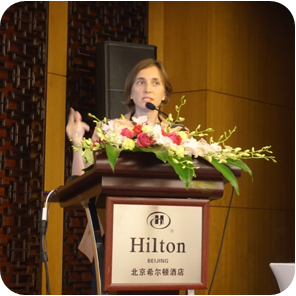
Ms. Maya Ben Dror, iCET’s Clean Transportation Transformation Programme Director introduced the “2016 Real-world Passenger Vehicle Fuel Consumption Analysis.” This study aims to assess the gap between reported and real-world fuel consumption (FC). It therefore uses the reported FC data available on the MIIT’s website and a bottom-up actual FC data from the collection App, BearOil App (小熊油耗). BearOil App data includes nearly 600,000 users and over 15 million data inputs inserted between 2008 and 2015, covering 16,000 vehicle models in 31 cities in China. These FC data inputs include vehicle model and brand, region and user demographics information. Among the research highlights are: 1) the FC gap has been increasing over time from an average of 112% in 2008 to 127% in the last couple of years; 2) automated transmission (AT) vehicles typically have larger reported versus actual FC gap than manual transmission (MT) vehicles, indicating the overall FC gap will increase as AT market share increases; 3) based on the analysis of yearly FC gap of some models in cities in certain latitudes, northern cities (Harbin and Beijing) and southern cities (Shanghai and Shenzhen) have shown different FC gap variations trends; 4) Multi-purpose vehicles (MPVs) have shown the lowest FC gap of all vehicle segments. Ms. Ben Dror emphasized that there are multiple factors impacting the gap between actual and certified (laboratory-reported) fuel consumption. China’s current fuel consumption test-cycle could be improved by utilizing actual driving FC measurements thereby narrowing the FC gap. This report further highlights the need for independent and accountable third-party scrutiny of auto standards implementation status.
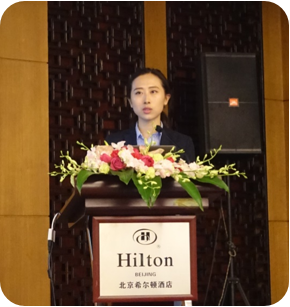 Ms. Emma Wang, iCET’s Clean Transportation Transformation Programme Project Officer, introduced the novel “ICT based Urban Real-world Transportation FC and Emission Research-Chengdu Case Study Brief." Supported by the Air and Water Conservation Fund of the National Geographic Society, through public-private cooperation which included Uber Chengdu and Southwest Jiaotong University, iCET conducted a pilot study in Chengdu. The project integrated real-time urban transportation data from various information and communications technology (ICT) platforms (e.g. Uber, GPS, smart city applications, public transportation systems) to gain a better understanding of the effectiveness of the urban transportation systems in the real world. Preliminary findings showed urban area vehicle speed for a typical work day to be about 25 km/h and under 16 km/h during peak hours, indicating that a vehicle typically emits 44% and 78% more emissions during normal and peak hours compared to conventionally calculated emissions respectively. Overall, the study showed the main urban area of Chengdu to emit around 17,500 tons of carbon from passenger vehicles per day, roughly 59% higher than what is estimated by using a conventional model (11,000 tons, calculated using the COPERT EF). iCET believes results like these strongly demonstrate the need for quantifying outputs based on the MRV standard. Ms. Wang states that in the future, a data sharing mechanism through public-private collaboration should be developed, and establish MRV standard as a tool to tackle climate change challenges in the transportation sector. Ms. Emma Wang, iCET’s Clean Transportation Transformation Programme Project Officer, introduced the novel “ICT based Urban Real-world Transportation FC and Emission Research-Chengdu Case Study Brief." Supported by the Air and Water Conservation Fund of the National Geographic Society, through public-private cooperation which included Uber Chengdu and Southwest Jiaotong University, iCET conducted a pilot study in Chengdu. The project integrated real-time urban transportation data from various information and communications technology (ICT) platforms (e.g. Uber, GPS, smart city applications, public transportation systems) to gain a better understanding of the effectiveness of the urban transportation systems in the real world. Preliminary findings showed urban area vehicle speed for a typical work day to be about 25 km/h and under 16 km/h during peak hours, indicating that a vehicle typically emits 44% and 78% more emissions during normal and peak hours compared to conventionally calculated emissions respectively. Overall, the study showed the main urban area of Chengdu to emit around 17,500 tons of carbon from passenger vehicles per day, roughly 59% higher than what is estimated by using a conventional model (11,000 tons, calculated using the COPERT EF). iCET believes results like these strongly demonstrate the need for quantifying outputs based on the MRV standard. Ms. Wang states that in the future, a data sharing mechanism through public-private collaboration should be developed, and establish MRV standard as a tool to tackle climate change challenges in the transportation sector.
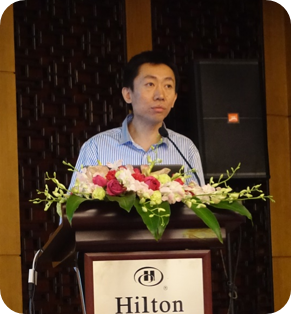 Dr. Jingnan Hu from Chinese Research Academy of Environmental Sciences spoke about “The Development of Monitoring Policy and Technology in Real-world Fuel Consumption and Emissions from Motor Vehicles.” He introduced the investigation of real-world fuel consumptions and emissions from light-duty vehicles and heavy-duty vehicles, as well as monitoring policy and technology in real-world fuel consumption and emission from motor vehicles. Dr. Jingnan Hu from Chinese Research Academy of Environmental Sciences spoke about “The Development of Monitoring Policy and Technology in Real-world Fuel Consumption and Emissions from Motor Vehicles.” He introduced the investigation of real-world fuel consumptions and emissions from light-duty vehicles and heavy-duty vehicles, as well as monitoring policy and technology in real-world fuel consumption and emission from motor vehicles.
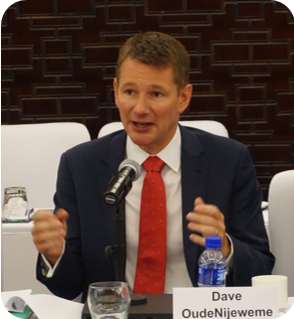 Mr. Dave Oude Nijeweme, the consulting manager of E4Tech, introduced the “CUTEC - China Urban Transport Emission Calculator," and analyzed actual emissions in the UK. The CUTEC model was developed by E4Tech and iCET, and it can be used to assess the impact of different transport policies on emissions to assist decision-makers to develop more effective urban transport policy. E4Tech also proposed a new top-down emission estimation method. Through estimation of overall urban fuel consumption, the UK study results show that emission factors are key elements using different methods. Hence, it is important to enhance the accuracy of emission factors of different pollutants for each city, and to avoid misleading policy formulation. Mr. Dave Oude Nijeweme, the consulting manager of E4Tech, introduced the “CUTEC - China Urban Transport Emission Calculator," and analyzed actual emissions in the UK. The CUTEC model was developed by E4Tech and iCET, and it can be used to assess the impact of different transport policies on emissions to assist decision-makers to develop more effective urban transport policy. E4Tech also proposed a new top-down emission estimation method. Through estimation of overall urban fuel consumption, the UK study results show that emission factors are key elements using different methods. Hence, it is important to enhance the accuracy of emission factors of different pollutants for each city, and to avoid misleading policy formulation.
Experts and the media also had a lively discussion at the meeting. Mr. Yuefu Jin from China Automotive Technology and Research Center, Dr. Xiaoping Xiong and Dr. Songli Zhu from the NRDC ERI (Energy Research Institute), Dr.Xunmin Ou from Tsinghua University Automotive Energy Research Centre, Mr.Hongbo Sun from BearOil App, and other industry experts all gathered to discuss the topics in depth.
|

